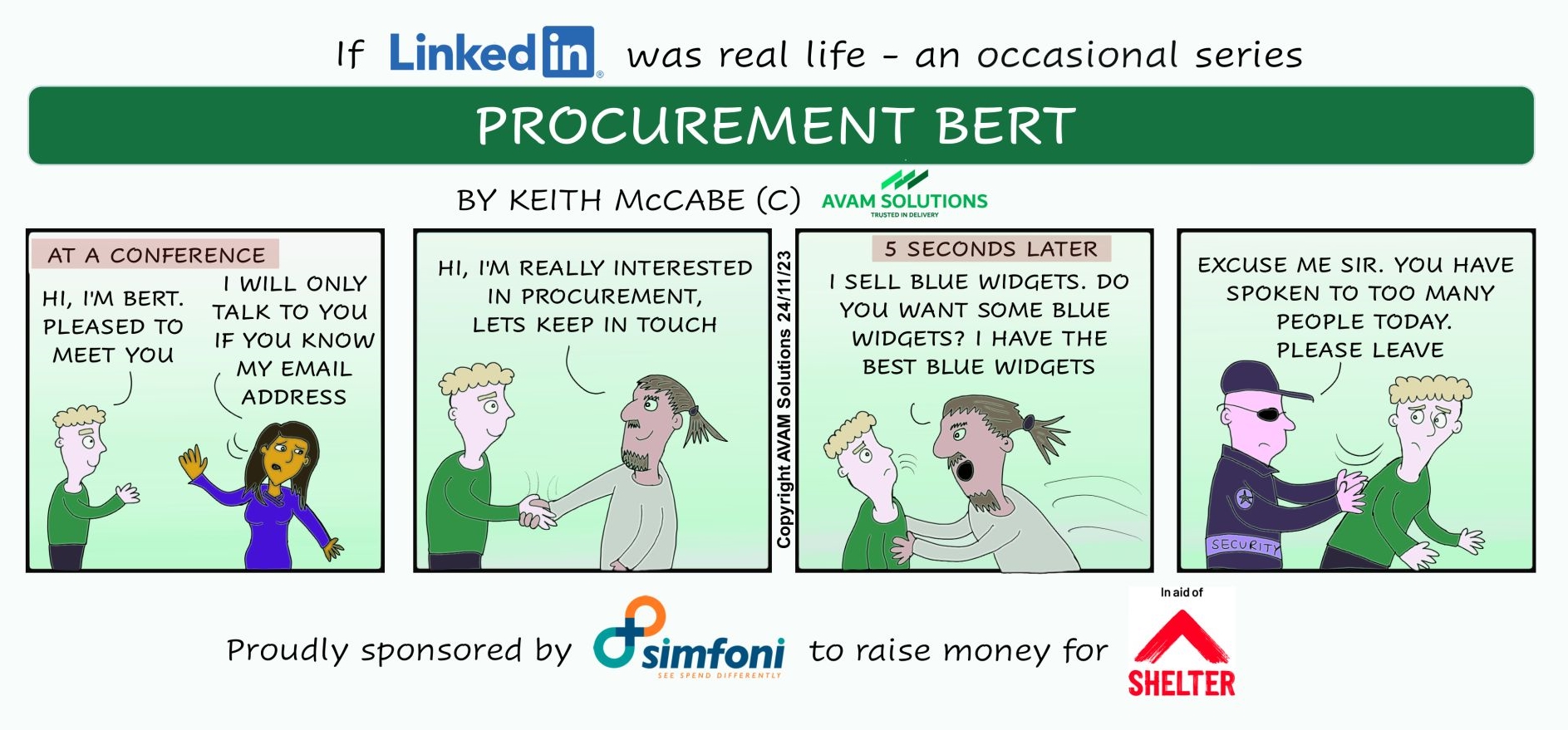Sustainability experts share insight and advice on how to start building sustainable supply chains.
Simfoni.com Tweet
There is a growing trend of businesses looking to create more sustainable supply chains, but many are unsure how to get started. Some frequent questions are: What does sustainability really mean within the supply chain? What are the challenges? What are the solutions? And how do we get started toward a more sustainable supply chain?
Natascha Lander, Co-Founder of BELIEVE., an advisory firm focused on sustainability consulting and education, recently moderated a panel discussion on the impact of supply chains on sustainability. The panel included Chirag Shah, Chairman of Simfoni; Nicole Rycroft, Founder of Canopy; and Rebecca Berlinger, Co-Founder of BELIEVE. They discussed the latest trends in sustainable supply chain management, and how they can be incorporated into your own business.
Nicole Rycroft of Canopy, a solution-driven nonprofit that works to protect the world’s forest biodiversity, articulated that at the highest level, “sustainability within supply chains is both the environmental sustainability—low carbon, low impact on biodiversity, as well as social awareness”—meaning a business needs to take a hard look at how it operates and impacts the world beyond its own walls if it wants to start building a sustainable supply chain.
And how can companies get this granular insight into their supply chain? Chirag Shah, Chairman of Simfoni, a technology company focused on procurement and supply chain analytics, (the use of data to make informed, strategic sourcing and procurement decisions), has a solution. “[Simfoni has] this unique approach to quantifying the measurement of impact in dollar or financial terms, rather than a balanced scorecard, which is difficult to interpret in real terms,” said Shah, “so we’re trying to move the industry towards this more quantifiable and level–setting approach.
Read More:- What is Supplier Diversity and Why is it Important?
Shah pointed to Simfoni’s Impact Assessment Framework and the “multiplier effect” within a supply chain as a prime example of how the supply chain has the greatest influence on a company’s environmental and social impact, approximately 50%. “You can see that your own companies’ programs and initiatives have this trickle-down effect in the supply chain. And because it’s your supply chain, you have the most power and influence within this hierarchy to be able to influence change.”
Lander asked for perceptions on the presence of CSR (Corporate Social Responsibility) initiatives within organizations today compared to 20 years ago, as one of the long-perceived challenges of sustainability is that it is costly. Rebecca Berlinger, co-founder of BELIEVE., pointed out that it’s not just about cost for companies—rather, it’s more about risk. “If we think about how the future economy might look, [sustainability] has huge implications for businesses, and therefore huge implications for all of the stakeholders that you deal with,” she said, “And I think the biggest challenge for organizations is knowing where to start and where to focus.” Since data around the supply chain can be complex, obtaining and interpreting the data into actionable insights can seem daunting for many companies.
“This is a journey, it’s about setting short–term goals, medium–term goals, long–term goals,” she said. She pointed out that a company may discover something negative about a certain supplier or product, but a suitable alternative may not yet exist, which is a particular challenge for smaller companies that don’t have the same influence as larger enterprises, prompting Lander to ask Rycroft of Canopy, who works with larger brands such as H&M, Zara, and Walmart, what are the challenges specific to big, powerful companies on implementing sustainable supply chain practices? “Not knowing where there’s risk and exactly what’s in supply chains is something both large and small companies run into,” she said. Another challenge organizations of any size face, she pointed out, is lack of expertise (e.g., not knowing the right questions to ask suppliers, or how to interpret their answers) and even a lack of understanding of what is truly sustainable.
Another challenge is organizational resistance to change, due to deeply vested interests within conventional supply chains. “There needs to be a value proposition for them to change ‘business as usual’ practices. Rycroft went on to explain how larger brands can play a key role by sending clear market cues that reach their suppliers and create the willingness to change. “At Canopy, we work with brands to develop cutting edge environmental policies that set a very clear direction— (e.g., here’s where we’re heading, we will be shifting out of any sourcing that’s got ancient and endangered forest fiber in it by 2025). So, it sends a very clear signal to suppliers, so they can hopefully move [toward sustainability] with you. But it also gives you an opportunity to identify other suppliers who are willing to step into that space. And if some of your existing suppliers aren’t.”
Read More:- What is Sustainable Procurement and Why it is Important for Businesses?
“That actually doesn’t sound too complicated to be honest,” mused Lander. “When putting down a policy, it’s all about commitment and [alignment], right?” She asked Berlinger what else could be done in addition to policymaking, and Berlinger said that demand signals extremely important. “The solutions don’t exist until the demands are there,” she said. “If companies show their commitment to buying sustainable alternatives, then you’ve created the market and the incentive.” She added that other challenges are a lack of transparency, and standardized reporting. “[For organizations], right now, there’s so much data, there’s so much information, but to be able to actually make sense of it is really difficult. So, this kind of transparency alongside more standardized reporting in this space is really important.”
Shah pointed out that data is relatively easy to get in this space, and a company can start by looking at your consumption with suppliers. “By looking at where are you spending, you can start profiling [your spend] and say ‘I’m spending this much money with an energy company. So, if I know the company and the energy source I’m buying, and how they’re generating that source, (whether it’s from coal fired power station or nuclear, or so on), then I can make a pretty accurate determination as to my own co2 emissions because of what I’m responsible for in terms of co2 emissions in my own plants and offices.”
When asked by Lander if many companies are doing this assessment, Shah said although there is increasing interest and progress, “we are regrettably still in the early stages”. As to how to break through the challenges identified by Berlinger and Rycroft, he said when organizations start looking at their supply chain, they should go to the middle to lower end of the supply chain, known as the “tail spend.” “When you get into the tail spend, three things start to happen,” said Shah. “First of all, your influence over your supplier is far greater. Second, you’re now outside the realm of what we call strategic products, where the relationship with the supplier is maybe complex, and your ability to look at alternatives and to more responsible suppliers is far greater. It’s much easier to do that in that mid-tier.”
A polling taken from the audience showed that 55% of participants hope to achieve greater cost savings and cost reduction by implementing a more sustainable supply chain. Yet 55% of participants also indicated their biggest challenge around building greater sustainability was a lack of alignment with suppliers, a result that Shah says he completely understands. “I think that reflects the conversation we’ve been having around, ‘where do I start’. The strategic end is harder. And from experience, we’ve learned that [starting further] down the supply chain and getting some quick wins to build your confidence builds the business case for more sustainability internally.”
Read More:- Procurement With a Purpose – Leverage your spend to advance your organization’s CSR goals and ESG metrics
Rycroft agreed, stating that most of the brands she starts working with have no “clear line of sight through their supply chain“, but said that can change. “We’ve seen it change, sometimes quite quickly, when there’s enough consistent engagement, with brands [setting the cues and expectations].” All agreed that this is encouraging for the future of a sustainable circular economy.
Lander closed the session by recapping the aforementioned challenges most companies experience around supply chain sustainability—mainly transparency and insight into the actual supply chain, confusion around obtaining and interpreting data, and getting buy-in from the top down to build internal momentum for sustainable efforts—and some of the solutions that are already available to help companies navigate these complexities, like Simfoni’s Impact Assessment Model, policy making, brand marketing cues, and greater collaboration between buyers and suppliers.
Lander said, “What happens in the supply chain affects all of us—there is a supply chain in every product and in every service. And that’s why this topic is so important. This whole exchange of goods from retailer to consumers is ever changing with products being transported [further away], and eCommerce massively growing, changing the dynamics of the traditional supply chain. But the positive is that there is an increasing awareness of the environmental and social impact of our supply chains. And at the end of the day, I think that it is clear that [supply chain sustainability] is a win-win situation for all sides.”
“Supply Chains and their Impact”, a discussion for business leaders and procurement & sustainability experts. Attendees will learn how to::
- Start a dialogue with stakeholders on sustainable supply chains.
- Leverage data to assess the impact of your supply chains.
- Utilize key metrics to evaluate supplier performance.
- Identify the most impactful tools and solutions available.
Read More:- What is Procure to Pay – A Guide to Procure to Pay (P2P) Process
Moderator:

Natascha Lander
Co-Founder
BELIEVE.
BELIEVE. acts as a strategic partner to companies around sustainability.
Panelists:

Chirag Shah
Executive Chairman
Simfoni
Simfoni is a recognized leader in Spend Analytics, eSourcing, and Tail Spend management solutions.

Nicole Rycroft
Founder & Executive Director
Canopy
Canopy is an award-winning NGO which focuses on transforming unsustainable supply chains of big businesses.

Rebecca Berlinger
Co-Founder
BELIEVE.
BELIEVE. acts as a strategic partner to companies around sustainability.











